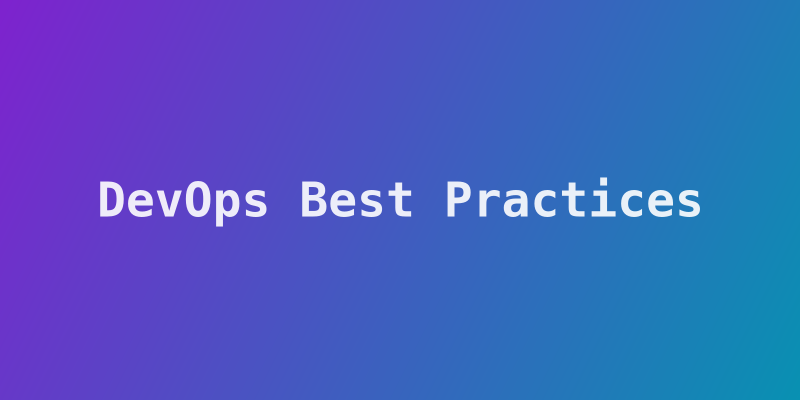DevOps Best Practices for 2024

As we advance through 2024, DevOps continues to evolve, bringing new tools, methodologies, and best practices that help organizations deliver software faster and more reliably. This comprehensive guide explores the essential DevOps practices that every modern development team should implement.
The Evolution of DevOps
DevOps has matured significantly since its inception, moving beyond simple automation to encompass culture, collaboration, and continuous improvement. Today's DevOps practices focus on creating seamless workflows that bridge the gap between development and operations while maintaining security and quality standards.
Essential CI/CD Pipeline Strategies
Continuous Integration and Continuous Deployment remain at the heart of DevOps success:
- Automated Testing: Implement comprehensive test suites including unit tests, integration tests, and end-to-end testing.
- Progressive Deployment: Use blue-green deployments, canary releases, and feature flags to minimize risk.
- Pipeline as Code: Define your CI/CD pipelines using version-controlled configuration files.
- Fast Feedback Loops: Ensure developers receive immediate feedback on code changes and deployment status.
Infrastructure as Code (IaC) Best Practices
Managing infrastructure through code has become a cornerstone of modern DevOps:
Version Control: Store all infrastructure definitions in version control systems alongside application code.
Modular Design: Create reusable infrastructure modules that can be shared across projects and environments.
Environment Parity: Ensure development, staging, and production environments are as similar as possible.
Automated Provisioning: Use tools like Terraform, CloudFormation, or Pulumi for consistent infrastructure deployment.
Monitoring and Observability
Modern applications require comprehensive monitoring strategies:
Three Pillars of Observability: Implement logging, metrics, and distributed tracing to gain complete visibility into system behavior.
Proactive Monitoring: Set up alerts and dashboards that help identify issues before they impact users.
SLI/SLO Framework: Define Service Level Indicators and Objectives to measure and maintain system reliability.
Security Integration (DevSecOps)
Security must be integrated throughout the development lifecycle:
- Shift-Left Security: Incorporate security testing early in the development process.
- Container Security: Scan container images for vulnerabilities and implement runtime security monitoring.
- Secrets Management: Use dedicated tools for managing API keys, passwords, and certificates.
- Compliance Automation: Automate compliance checks and reporting to meet regulatory requirements.
Team Collaboration and Culture
Technical practices alone don't guarantee DevOps success—culture is equally important:
Shared Responsibility: Foster a culture where development and operations teams share responsibility for application performance and reliability.
Blameless Post-Mortems: When incidents occur, focus on learning and improvement rather than assigning blame.
Continuous Learning: Encourage team members to stay updated with new tools and practices through training and experimentation.
Emerging Trends for 2024
Several trends are shaping the future of DevOps:
GitOps: Using Git as the single source of truth for declarative infrastructure and applications.
AI-Powered Operations: Leveraging machine learning for predictive analytics, automated incident response, and optimization.
Platform Engineering: Building internal developer platforms that abstract complexity and improve developer experience.
Measuring DevOps Success
Track key metrics to measure the effectiveness of your DevOps practices:
- Deployment Frequency: How often you deploy code to production.
- Lead Time: Time from code commit to production deployment.
- Mean Time to Recovery (MTTR): How quickly you can recover from failures.
- Change Failure Rate: Percentage of deployments that cause production issues.
By implementing these DevOps best practices, organizations can achieve faster delivery cycles, improved reliability, and better collaboration between teams. The key is to start with foundational practices and gradually adopt more advanced techniques as your team's maturity grows.
Michael Rodriguez
Senior Software Engineer at Vintorr with expertise in cloud-native technologies and enterprise software development. Passionate about sharing knowledge and helping teams build better software.